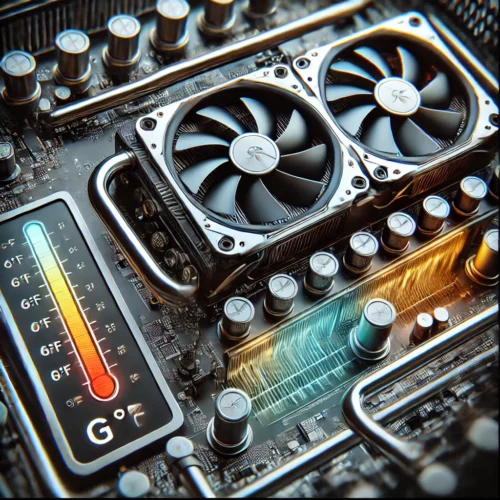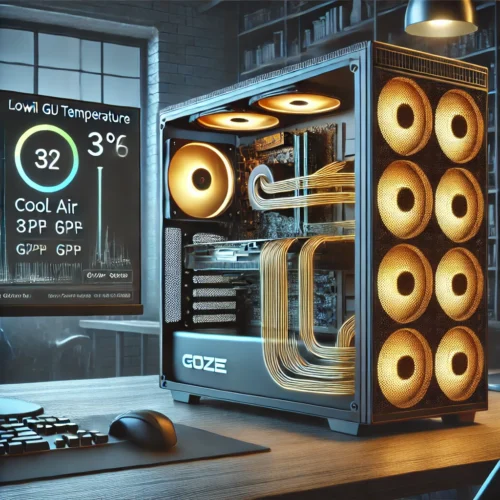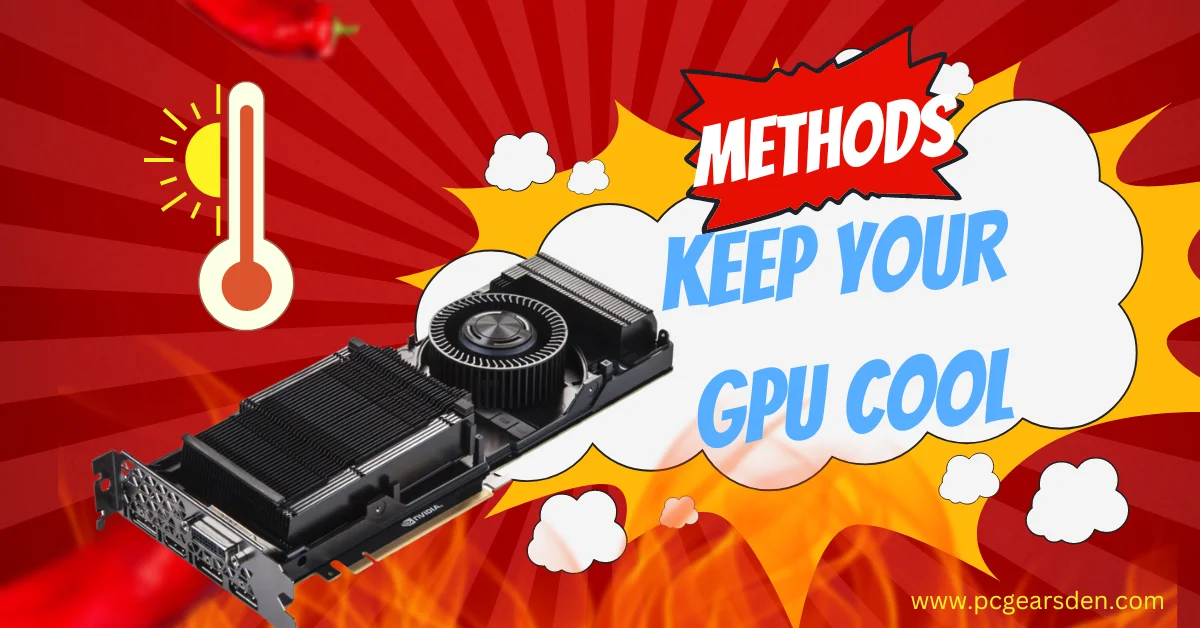Lowering GPU Temperature
Keeping your GPU at an optimal temperature is crucial for maintaining performance and longevity. Overheating can lead to throttling, reduced lifespan, and even permanent damage. In this blog post, we’ll explore practical steps to effectively lower your GPU temperature, ensuring your system runs smoothly even under heavy loads.
The GPU, or graphics processing unit, is a key part of a PC that handles a lot of work, even when you’re not gaming. It generates heat as it’s used by different applications, so it’s important to keep it cool to ensure smooth performance.
Lowering GPU temperature isn’t usually hard, but sometimes you might need to put in a bit more effort to keep it running at its best. No one wants a GPU that overheats and slows down, so keep reading to learn how to effectively manage and reduce GPU temperatures to protect your graphics card’s performance and lifespan.

Understanding GPU Temperature Ranges
Before diving into the methods of lowering your GPU temperature, it’s important to understand what constitutes a normal temperature range. Generally, a GPU should operate between 140°F to 185°F (60°C to 85°C) under load. Temperatures above 194°F (90°C) can be dangerous and lead to thermal throttling or hardware failure.
For more detailed information on what is considered an optimal temperature range for your GPU, check out this comprehensive guide on What Is Optimal GPU Temperature Range?.
TGPU Temperature Ranges and Their Implications
| Temperature (°F) | Status | Implications |
|---|---|---|
| 60°F – 140°F | Cool | Safe operating range, optimal performance |
| 140°F – 185°F | Normal | Standard operating range under load |
| 185°F – 194°F | Warning | High temperature, consider improving cooling |
| 194°F+ | Critical | Overheating, potential damage or throttling |
Methods to Lower GPU Temperature
1. Improve Airflow in Your Case
One of the most straightforward ways to reduce GPU temperature is by improving the airflow within your PC case. Proper airflow ensures that hot air is expelled and cool air is drawn in to maintain a lower temperature. Consider the following:
- Add More Fans: Install additional case fans to improve airflow. Ensure that there is a balance between intake and exhaust fans.
- Clean Dust and Debris: Dust buildup can obstruct airflow, causing your GPU to overheat. Regularly clean your case, fans, and GPU to remove any dust.
- Rearrange Cables: Tidying up cables can significantly improve airflow within your case, allowing cooler air to reach your GPU.

2. Adjust GPU Fan Speed
Controlling your GPU fan speed can make a significant difference in temperature management. Most GPUs come with software that allows you to manually adjust the fan curve, increasing fan speed as the temperature rises.
For a detailed guide on how to effectively control your GPU fan speed, visit How To Effectively Control GPU Fan Speed.
3. Optimize In-Game Settings
High graphics settings can push your GPU to its limits, causing it to run hotter. Reducing settings like resolution, texture quality, and shadows can lower the load on your GPU, thereby reducing its temperature. Consider the following:
- Lower Resolution: Reducing the resolution decreases the number of pixels your GPU has to render, leading to a lower temperature.
- Adjust Texture Quality: High-quality textures can increase GPU load. Lowering the texture quality can reduce temperature without a significant loss in visual fidelity.
- Disable V-Sync: While V-Sync can help reduce screen tearing, it can also put additional strain on your GPU, leading to higher temperatures.
4. Reapply Thermal Paste
Over time, the thermal paste between your GPU’s heatsink and the chip can degrade, leading to inefficient heat transfer. Reapplying thermal paste can help lower your GPU’s temperature by improving thermal conductivity.
- Choose High-Quality Thermal Paste: Not all thermal pastes are created equal. Investing in high-quality thermal paste can yield better results.
- Be Careful: Reapplying thermal paste requires removing the GPU’s cooler, which can be tricky. If you’re not comfortable doing it yourself, consider seeking professional help.
For a detailed guide on how to correctly apply thermal paste on GPU, visit How to Correctly Apply Thermal Paste on GPU.
5. Upgrade Your Cooling Solution
If your GPU is consistently running hot, it might be time to upgrade your cooling solution. Options include:
- Aftermarket GPU Coolers: These offer better cooling performance than stock coolers and can significantly reduce temperatures.
- Liquid Cooling: For the ultimate cooling performance, consider liquid cooling. While more expensive and complex to install, it can drastically lower GPU temperatures.
For a detailed guide on best budget friendly liquid graphics card in 2024, Best Budget-Friendly Graphics Cards with Liquid Cooling in 2024.

6. Underclock Your GPU
Underclocking reduces the power draw of your GPU, leading to lower temperatures. While this may result in a slight decrease in performance, the trade-off can be worth it if you’re struggling with high temperatures.
- Use Manufacturer Software: Most GPU manufacturers provide software that allows you to easily underclock your GPU.
- Monitor Performance: After underclocking, monitor your GPU’s performance and temperature to find the right balance between cooling and performance.
Conclusion
Maintaining an optimal GPU temperature is essential for both performance and longevity. By improving airflow, adjusting fan speeds, optimizing in-game settings, reapplying thermal paste, upgrading your cooling solution, and underclocking, you can effectively lower your GPU temperature and prevent overheating issues.
Remember to keep an eye on your GPU’s temperature during heavy workloads and gaming sessions. With these tips, you’ll be well-equipped to keep your system running cool and efficiently.
As discussed in a detailed guide by PC Gamer, tweaking fan speed, voltage, and clockspeed are key methods to ensure your GPU runs cool, especially when under heavy load (pcgamer). Implementing these strategies will help safeguard your graphics card’s performance and extend its lifespan
